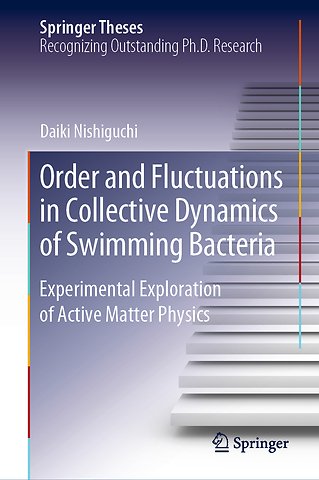Order and Fluctuations in Collective Dynamics of Swimming Bacteria
Experimental Exploration of Active Matter Physics
Samenvatting
This thesis focuses on experimental studies on collective motion using swimming bacteria as model active-matter systems. It offers comprehensive reviews of state-of-the-art theories and experiments on collective motion from the viewpoint of nonequilibrium statistical physics. The author presents his experimental studies on two major classes of collective motion that had been well studied theoretically. Firstly, swimming filamentous bacteria in a thin fluid layer are shown to exhibit true, long-range orientational order and anomalously strong giant density fluctuations, which are considered universal and landmark signatures of collective motion by many numerical and theoretical works but have never been observed in real systems. Secondly, chaotic bacterial turbulence in a three-dimensional dense suspension without any long-range order as described in the first half is demonstrated to be capable of achieving antiferromagnetic vortex order by imposing a small number of constraints with appropriate periodicity. The experimental results presented significantly advance our fundamental understanding of order and fluctuations in collective motion of motile elements and their future applications.
Specificaties
Inhoudsopgave
Net verschenen
Rubrieken
- aanbestedingsrecht
- aansprakelijkheids- en verzekeringsrecht
- accountancy
- algemeen juridisch
- arbeidsrecht
- bank- en effectenrecht
- bestuursrecht
- bouwrecht
- burgerlijk recht en procesrecht
- europees-internationaal recht
- fiscaal recht
- gezondheidsrecht
- insolventierecht
- intellectuele eigendom en ict-recht
- management
- mens en maatschappij
- milieu- en omgevingsrecht
- notarieel recht
- ondernemingsrecht
- pensioenrecht
- personen- en familierecht
- sociale zekerheidsrecht
- staatsrecht
- strafrecht en criminologie
- vastgoed- en huurrecht
- vreemdelingenrecht
